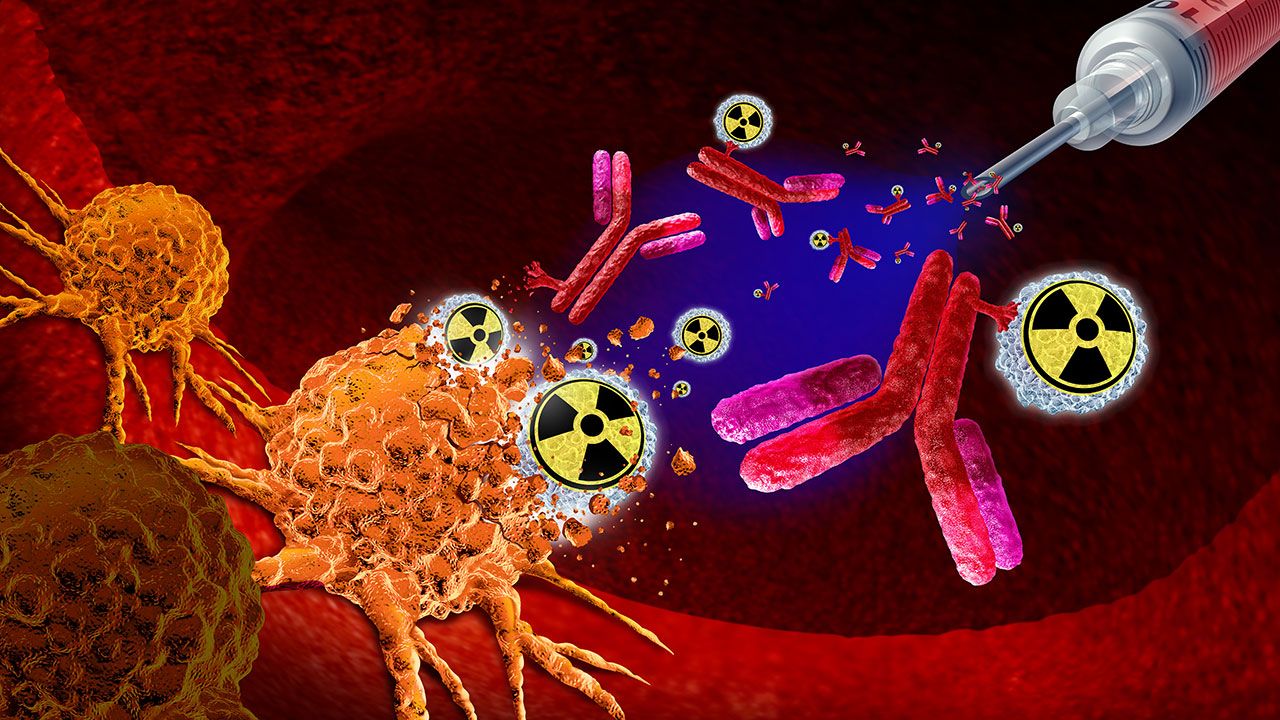News
Article
Pharmaceutical Technology Europe
Pharmaceutical Technology Europe
Developing nanoparticle formulations or poorly soluble drugs
Author(s):
Rapid advances in drug discovery have led to the identification of a number of compounds with good therapeutic potential.
Rapid advances in drug discovery have led to the identification of a number of compounds with good therapeutic potential. However, because of their complex chemistry, the majority of these compounds have poor aqueous solubility resulting in reduced and variable bioavailability.1–3 Current marketed formulations of sparingly water-soluble drugs such as Ketoconazole (KC), a imidazole antifungal agent used for treatment of fungal infections,4 Fenofibrate (FF), a fibric acid derivative used for the treatment of hypertriglyceridimia,5 and Candesartan cilexetil (CC) a non-peptide angiotensin II type 1 receptor antagonist used in the treatment of hypertension, are suboptimal.6 Following oral administration, absorption of these drugs from the gastrointestinal (GI) tract is dependent on their solubility in Gl fluids. Poorly soluble drugs generally have low dissolution velocity and exhibit a small concentration gradient across the intestinal mucosa, which can result in low, variable absorption and a poor therapeutic response.

Based on the understanding that the rate of drug dissolution is the primary driving force behind improved pharmacokinetic properties, these drugs were formulated as nanometer-sized particles — particles <1 μm. The increase in surface area because of the reduction in particle size can substantially increase dissolution rate if the formulation disperses into discrete particles.7
Nanocrystalline dispersion comprises drug, water and stabilizers. Stabilizers used to aid the dispersion of particles are either polymers and/or surfactants. Polymers act as the primary stabilizer whereas surfactants are used as the secondary stabilizer. To be effective, the stabilizers must wet the drug crystals and provide a steric and ionic barrier to prevent agglomeration. The concentration of polymeric stabilizers can range 1–10% w/v and the concentration of surfactants is generally <2% w/v.8 If required, other excipients, such as buffers, salts and diluents, such as sugar, can be added to enhance physical stability and further processing.
The bead milling process used for the production of drug nanoparticles can be described as a simple procedure comprising attrition media, suspension and agitation. The extent of size reduction is governed by the grinding energy, which is determined by the intrinsic hardness of the drug, grinding media and milling power. The nanoparticulate dispersion was converted into solid intermediates for tabletting by granulating with water-soluble carriers. The dissolution characteristics of tablet formulations containing drug nanoparticles were compared with commercial formulations in physiologically relevant dissolution media.

On the go...
Materials and methods
Materials. FF, KC and CC were procured from Dr. Reddy's Laboratories (India). Lactose monohydrate was purchased from Roquette Frères (France). Hydroxypropyl methylcellulose (HPMC, 6cps) was purchased from Colorcon (India). Sodium lauryl sulphate was purchased from Qualigen Fine Chemicals (India). Crospovidone (Polyplasdone) and sodium starch glycolate were obtained from International Specialty Products (Wayne, NJ, USA [ISP]) (USP) and Grain Processing Corp. (Muscatine, IA, USA), respectively. All other chemicals were of analytical reagent grade.
Preparation of nanosuspension on a laboratory scale. A glass apparatus mimicking the media milling machine was fabricated in-house for identifying the appropriate stabilizer, along with its concentration, for the preparation of nanoparticulate dispersions with adequate physical stability and the production of solid intermediates required for solid dosage form processing.9
Scale-up of manufacturing process for production of nanosuspensions. The selected compositions were scaled-up using a bead mill (Lab Star 1 Netzsch Mill; Netzsch, Germany). The milling media comprised 0.2 mm yttrium-stabilized zirconium beads. The suspension flowed axially through the milling chamber where the shear forces generated during impaction of the milling media with the drug provided the energy input to fracture the drug crystals into nanometer-sized particles. The milling operation was performed in a recirculation mode with the suspension fed at a rate of 150 mL/min. The mill and pump speeds were operated at 2500 and 120 rpm, respectively. The temperature inside the milling chamber was controlled by circulating cooling water through the outer jacket. After milling, the suspension was collected and stored at a temperature below 25 °C until further processing.
Conversion of nanosuspensions into solid intermediates. The nanoparticulate and microparticulate dispersions of FF, KC and CC were converted into solid intermediates by spray granulation process (GPCG 1.1 fluidized bed coater; Glatt GmbH, Germany). The suspensions were layered at a predetermined spray rate (6 g/min) onto lactose particles using a top spray fluid bed processor. The drying temperature and atomization speed were set at 40–45 °C and 1.2 bar, respectively. The granules were dried as they moved upward, and small droplets and low viscosity of the spray medium ensured that distribution was uniform resulting in granules with a narrow size distribution.
Solid state characterization
Differential scanning calorimetry. Thermal properties of powder were investigated using a PerkinElmer (Waltham, MA, USA) differential scanning calorimeter (DSC)-7/thermal analysis controller (TAC)-7 with an intracooler-2 cooling system. For this analysis, approximately 3–5 mg of product were placed in perforated aluminum-sealed 50-μL pans and the heat runs for each sample were set from 40 to 200 °C at 5 °C/min under an inert environment using nitrogen. The apparatus was calibrated using indium.
Powder X-ray diffraction. Powder x-ray diffractograms of unmilled and milled formulations were recorded using a Panalytical Xpert Pro Diffractometer (PANalytical, The Netherlands) with a Cu line as the source of radiation. Standard runs using a 40 kV voltage, a 40 mA current and a scanning rate of 0.02°/min with a 2θ range of 3 to 40 °C were used.
Tablet preparation. The granules containing drug nanoparticles of KC, FF and CC were blended with extra-granular excipients using a double cone blender. The blend was subsequently compressed into tablets at the desired strength, and the physical properties of tablets — hardness, friability and disintegration time — were measured.
Dissolution studies. The dissolution characteristics of tablets containing drug nanoparticles and marketed product were determined using a USP dissolution apparatus (DISSO 2000; Labindia, India) type II, fitted with a paddle that operated at 50 rpm. The dissolution media comprised 0.1 N HCl (pH 1.2), acetate buffer (pH 4.5), phosphate buffer (pH 6.8) and purified water. The volume and temperature of the dissolution medium were 500 mL and 37 °C. Samples were withdrawn at predetermined time intervals, filtered in-line and assayed using an HPLC method (Alliance HPLC System; Waters Corp., Milford, MA, USA). A discriminating dissolution media was identified based on its ability to differentiate impact of composition and particle size on dissolution velocity.
Results and discussion
The formula composition for producing nanosuspensions of FF, KC and CC for scale-up trials using the media mill is summarized in Table 1. The primary and secondary stabilizers selected produced stable nanosuspensions for conversion to solid intermediates required for solid dosage form processing.

Table 1: Formula composition of drug nanosuspensions for scale-up trials.
The key property of granules is their recovery (i.e., their ability to reconstitute into nanometer-sized particles when dispersed in an aqueous medium or physiologically relevant media). The particle size distribution of nanosuspensions and granules following redispersion in an aqueous medium that is summarized in Table 2 indicated complete recovery.

Table 2: Particle recovery from granules.
The DSC thermogram and x-ray diffraction spectra showed no solid state transitions, indicating that drug crystallinity was maintained upon milling.

Table 3: Tablet formula composition.
Tablet compositions incorporating drug nanoparticles are shown in Table 3. The dissolution characteristics of tablet formulations incorporating drug nanoparticles in discriminating dissolution media are shown in Figures 1–3. The rate and extent of drug dissolution for the nanoparticle FF formulation was comparable to the marketed product (Tricor). The dissolution profile of tablet formulations incorporating drug nanoparticles of KC and CC were significantly higher compared with commercial formulations.

Figure 1: Fenofibrate tablets containing drug nanoparticles, micronized drug and commercial tablet formulation.
Conclusions
The results from these studies demonstrate that the wet bead milling process coupled with spray granulation is a viable approach for developing nanoparticle formulations of biopharmaceutics classification system (BCS) class II compounds with enhanced solubility and faster dissolution. Enhancing solubility and dissolution velocity of sparingly soluble compounds correlates with an improved pharmacokinetics profile and a concomitantly improved therapeutic outcome.

Figure 2: Ketoconazole tablets containing drug nanoparticles, micronized drug and commercial formulation.
Note
Part of the work pertaining to development of KC nanoparticles was adjudged as the best original work in the area of pharmaceutical technology by a panel of independent judges from academia and industry at the 59th Indian Pharmaceutical Association Annual Conference (2–23 December 2007), held at Banaras Hindu University (India). This work was selected from approximately 1400 papers presented in the conference from India and abroad. The work related to development of CC nanoparticles has been accepted for presentation at the AAPS 2008 Annual Meeting in Atlanta (GA, USA), which will be held 16–20 November.

Figure 3: Candesartan cilexetil tablets containing drug nanoparticles, micronized drug and commercial formulation.
Vijaykumar Nekkanti is Assistant Manager, NCE Product Development, Dr. Reddy's Laboratories Ltd (India).
Pradeep Karatgi is Deputy Manager, CPS Product Development, Dr. Reddy's Laboratories Ltd (India).
Mahendra Joshi is Assistant Manager, NCE Product Development, Dr. Reddy's Laboratories Ltd (India).
Raviraj Pillai is Vice President, NCE and CPS Product Development, Dr. Reddy's Laboratories Ltd
References
1. C. Lipinski, Am. Pharmaceut. Rev., 5(Fall), 82–85 (2002).
2. C.A. Lipinski et al., Adv. Drug Delivery Rev., 46(1), 3–26 (2001).
3. J. Hecq et al., Int. J. Pharm., 299(1), 167–177 (2005).
4. H.B. Levine (ed.), Ketoconazole in the Management of Fungal Disease (Adis Press, New York, NY, USA,1982).
5. M.H. Davidson et al., Clinical Therapeutics, 27(6), 715–727 (2005).
6. H. Stenhoff et al., Journal of Chromatography B: Biomedical Sciences and Applications, 731(2), 411–417 (1999).
7. E.M. Liversidge, G.G. Liversidge and E.R. Cooper, Eur. J. Pharm. Sci., 18(2), 113–120 (2003).
8. G.G. Liversidge and K.C. Cundy, Int. J. Pharm., 125(1), 91–97 (1995).
9. S. Basa et al., Drug Dev. Ind. Phar., (2008) DOI: 10.1080/03639040802005024.
Newsletter
Get the essential updates shaping the future of pharma manufacturing and compliance—subscribe today to Pharmaceutical Technology and never miss a breakthrough.





